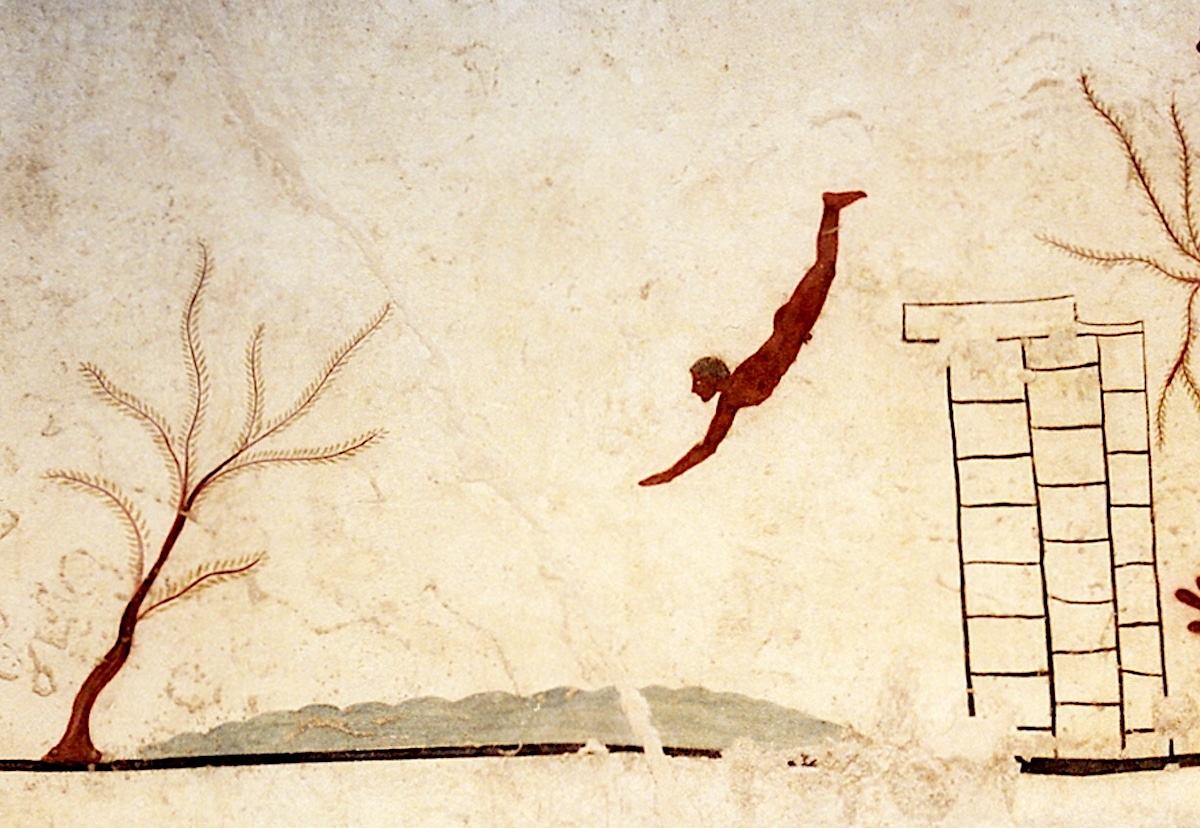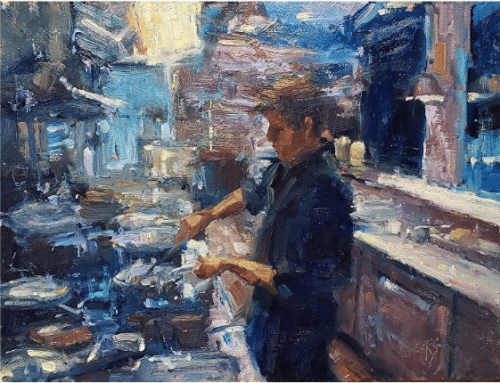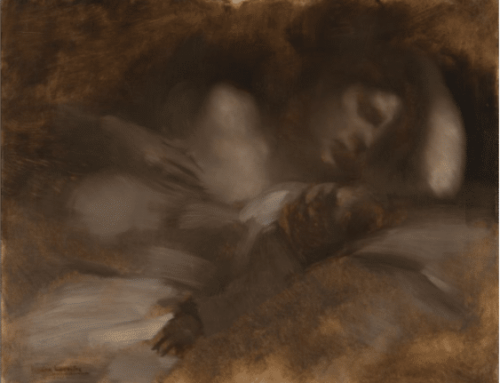The best way to learn how to paint is to paint – especially in sustained, or at least frequent bursts – and not to put too much weight on the results.
Your ideas of what good painting is will change over time anyway; the more sustained experience you can get just doing the thing, the better. Read, watch, look, and think all you can, but the most important thing is actually moving paint (or charcoal, or pastels) around.
Education is key, but learning by doing is the only way to discover what works for you and what doesn’t. You will get better much faster by “making more pots” – by working at what you do often and treating each painting as a learning process rather than an ultimatum on whether you’re “good enough.”
A helpful way to distract yourself from trying to make perfect paintings every time is by concentrated learning-by-doing: try setting a goal of making, say, three of the same kind of paintings in rapid succession, or committing to painting every day for a set number of days, and stick to it.
Such intentional, concentrated immersion is a form of experiential learning, and there’s actually a kind of formula for it. Experiential learning was proposed in the 1980s by theorist David Kolb, who charted the optimal learning process as a four-part cycle. To simplify, and in terms of painting, Kolb’s four stages are as follows:
1. Active Experimentation (you need to be doing SOMETHING – dive in and do not overthink it). Alternate your attention from what you’re trying to paint to what the paint is doing – most beginners don’t do this enough, because they’re too busy trying to make the painting look like something. This leads to:
2. Concrete Experience (staying mentally present with what happens when you actually do it – you will never stop learning about how your chosen medium behaves, and that’s a good thing). Instead of asking why something isn’t happening the way you want or expected it to, soak up what is happening and apply:
3. Reflective Observation (pausing, taking a step back, and assessing the results of 1 and 2 – it’s important to slow your mind down and process what is or isn’t working and why); doing this will lead effortlessly to:
4. Abstract Conceptualization (synthesizing and knowing what you have learned experientially, so that you can apply that knowledge to future experiments, experiences, etc.)
Some of this may seem self-evident, but it’s nice to have it broken down like this, so you can reflect on and fine tune your own learning process.
Jump In Anywhere
No single stage of the cycle is effective on its own, especially with something as concrete and physical as learning to paint. However, depending on what kind of learner you are, you can jump in at any stage and succeed, as long as you follow through all four stages of the cycle.
Hence the popularity of workshops: they tend to focus concentrated attention for several days at a stretch, during which you can immerse yourself in process – and put everything else on hold.
Workshops and events, especially those that gather several teachers together at once, such as the global online conference Plein Air Live, offer concentrated experiential learning opportunities with minimum distractions from the focus on creating rapid improvement.




